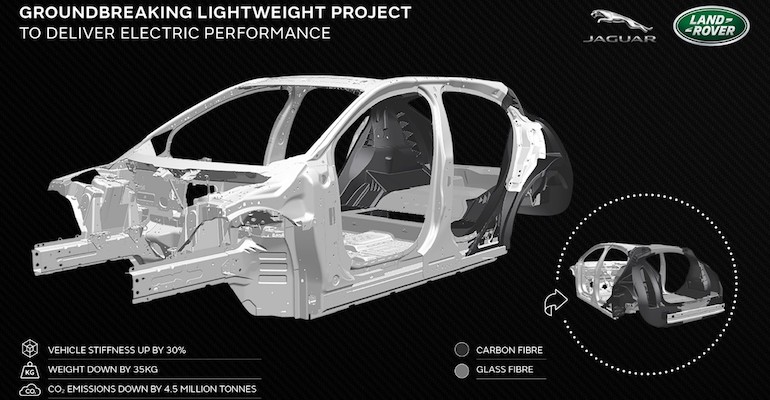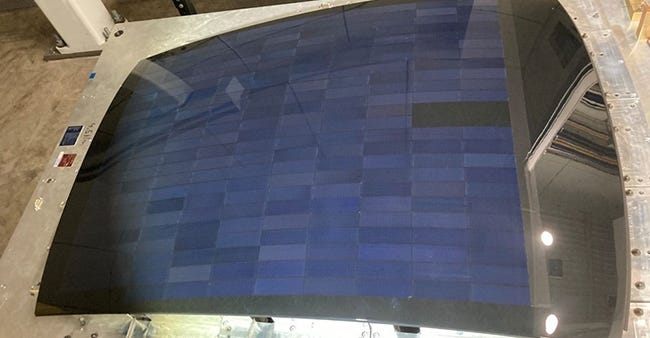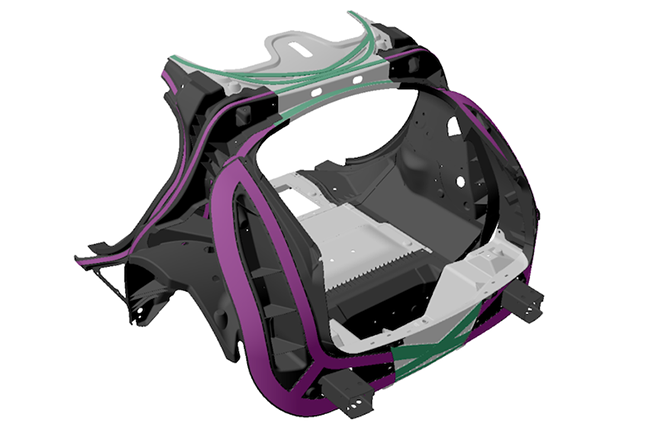Audi, Jaguar Land Rover Take Top Prizes at JEC Composites Innovation Awards
The carmakers earned a spot in the winner’s circle, respectively, for the seamless integration of a flexible solar film and for a composite rear end tailored to electric vehicles.
April 27, 2022

Every year, an international jury representing the composites value chain identifies major innovations in various end markets and nominates the standouts for the JEC Composites Innovation Award. The end market categories include Automotive & Road Transportation; Aerospace; Building & Civil Engineering; Design, Furniture, & Home; Equipment & Machinery; Maritime Transportation & Shipbuilding; Sports, Leisure, & Recreation; and Renewable Energy.
Here are the winners in the two automotive categories (other category winners are listed at the end of this article).
Automotive & Road Transportation — Surfaces
Winner: Seamless Integration of Flexible Solar Film in FRP
Company: Audi AG
|
With partners Mubea Carbo Tech and Apollo Power, Audi seamlessly integrated a flexible solar film with a fiber-reinforced rooftop using high-pressure resin transfer molding (RTM). The solar film can be also incorporated into a hood using this high-volume process that infuses self-extinguishing polyester resin into biaxial fiberglass fabric, the largest of which measures 4 x 6 meters (approximately 13 x 20 ft) and weighs 250 kg (551 lb). Use of natural fibers instead of glass can potentially dramatically reduce the CO2 footprint when coupled with solar. Further, complex 3D shapes with higher degrees of draping can be realized for rail or aerospace applications.
Automotive & Road Transportation — Structural
Winner: Tucuna
Company: Jaguar Land Rover
|
Developed with multiple partners including Broetje Automation and Toray, Tucuna is an enabler for future battery electric vehicles (BEVs) as demonstrated by the redesign of the entire rear body structure of a Jaguar I-Pace. Unlike traditional fabric-based manufacture using resin transfer molding (RTM) or autoclave technology, which are non-viable for volumes of 40,000 units-plus/year, the process lays unidirectional fast-cure continuous carbon or glass fiber to form a skeleton, which is then connected using carbon- or glass-fiber sheet molding compound (SMC).
Other category winners:
Aerospace — Application
Diab (Sweden): 100% thermoplastic panel for cabin interiors
Aerospace — Process
MTorres Disenos Industriales S.A.U. (Spain): Innovative Infusion Airframe Manufacturing System
Building & Civil Engineering
Windesheim (Netherlands): Structural Re-Use of Thermoset Composites
Design, Furniture, & Home
Kairos (France): Kairlin, a new recyclable and compostable material
Equipment & Machinery
Fibraworks GmbH (Germany): Winding the future — fibraforce technology
Maritime Transportation & Shipbuilding
Voith Composites SE & Co. KG (Germany): Marine rotor blades made of Voith Carbon4Stack
Renewable Energy
Siemens Gamesa Renewable Energy (Denmark): RecyclableBlade
Sports, Leisure, & Recreation
Bcomp Ltd. (Switzerland): Race-ready bond between thermoset and thermoplastic bio-composites
About the Author(s)
You May Also Like






